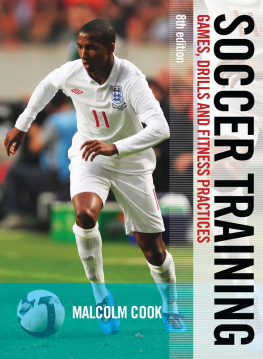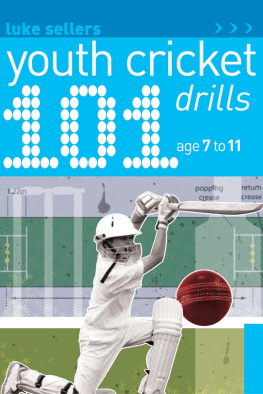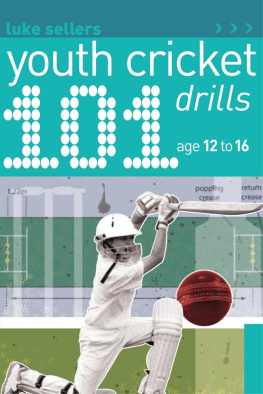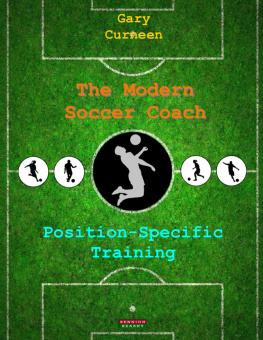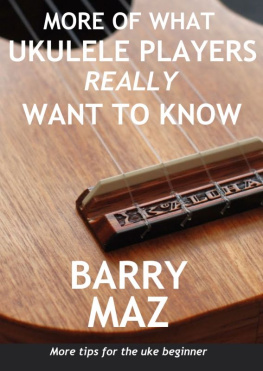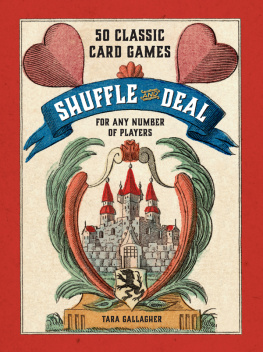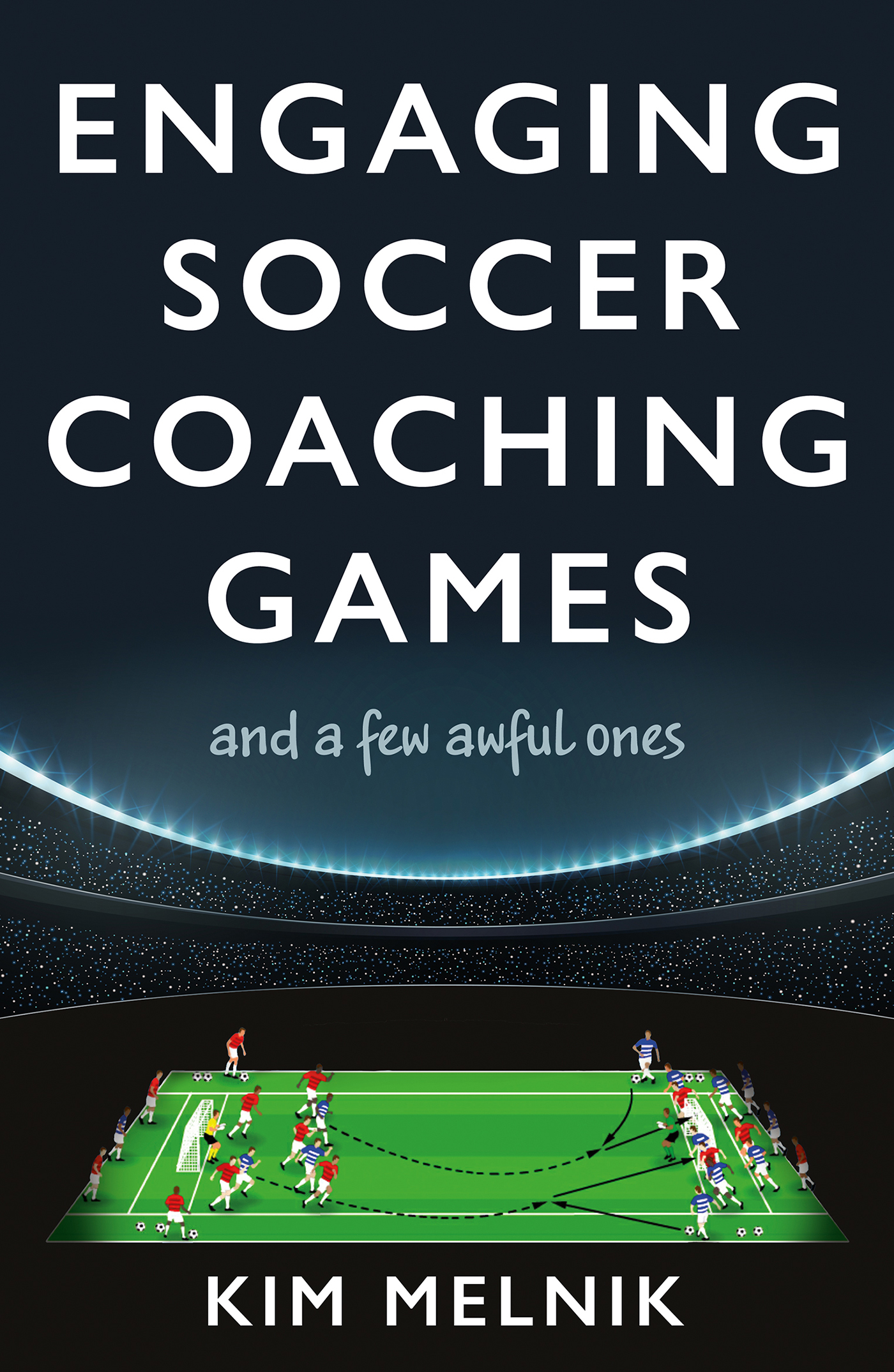Copyright 2021 Kim Melnik The moral right of the author has been asserted. Apart from any fair dealing for the purposes of research or private study, or criticism or review, as permitted under the Copyright, Designs and Patents Act 1988, this publication may only be reproduced, stored or transmitted, in any form or by any means, with the prior permission in writing of the publishers, or in the case of reprographic reproduction in accordance with the terms of licences issued by the Copyright Licensing Agency. Enquiries concerning reproduction outside those terms should be sent to the publishers. Matador 9 Priory Business Park, Wistow Road, Kibworth Beauchamp, Leicestershire. LE8 0RX Tel: 0116 279 2299 Email: books@troubador.co.uk Web: www.troubador.co.uk/matador Twitter: @matadorbooks ISBN 978 1800469 006 Cover image created using SoccerTutor.com Tactics Manager. British Library Cataloguing in Publication Data.
A catalogue record for this book is available from the British Library. Matador is an imprint of Troubador Publishing Ltd
Introduction
The Games Approach Almost 40 years ago Bunker and Thorpe (1982) explained the advantages of the Games Approach to learning, yet the Drill Format still dominates. Whilst drills are necessary in the army, sport has more room for expression and individuality. Although drills havent prevented some fantastic players progressing, this has been despite the Drill Format rather than because of it. The Drill Format controls players response by only offering one solution. Technique or decisions are repeated until they become second nature.
This format is easy to coach as there are a limited number of instructions required and its simple to correct. However, each player is limited by their coachs interpretation, whom is likely to have learnt the technique from their coach, who learnt it from their coach and so on. Thus the drill format doesnt evolve learning, but repeats past generations assumptions. Repeating technique is positive in moderation as it allows players to form muscle memory to gain consistency. However it is important players develop technique in a way that suits their unique body composition and mind. To achieve this, coaches can offer alternatives to players and guide them, but not so much that theyre moulding them into a mirror image of themselves.
This allows them to grow into independently-minded, unique players. By the coach adapting to the talents of the players, they allow them to find their own path. The Games Approach helps develop players understand more comprehensively by learning numerous solutions to multiple scenarios. Through possessing more tools they become less predictable. The Games Approach provides a more immersive environment, giving players purpose to maintain focus and motivation. The simpler games allow for repetition of the basic skills, whilst the more advanced games have more variation to progress players.
Dangers to Avoid The Games Approach is compromised when a coach controls rather than guides players decisions. Even with a facilitative approach, learning can be stifled by counter-productive games. E.g. 17e 2-touch. The 2-touch condition is intended to reduce players touches, to speed up play. Whereas in practice, players often stop their 1st touch in fear of rushing their 2nd touch.
The resultant static ball limits options, slowing play further as the ball carrier waits for an option. Knowing the ball carrier wont dribble, the opposition often back off and mark up, slowing play further. The game 12i Changing Directional Focus is an alternative that explains how to increase speed of play more organically. This book provides games that allow players to find the solution for themselves by posing problems that require positive decisions to solve. Learning is more permanent as players develop a comprehensive understanding through a fuller range of experiences. E.g. E.g.
Never play the ball across the back, closing players minds to the option. Yet developing better players requires opening their minds to risk by exploring multiple solutions. E.g. switching the ball at the back can help rotate the angle of play, maintain possession and decrease predictability. By encouraging decision making, players become confident of where and when to play this way. Whereas players who believe old generalisations, understand the danger of passing across the back, but close their minds to the opportunity of managing that risk.
Allowing Player Independence Players sometimes ask to play a match in training, often because theyre bored of repetition and want to play. This books games are an engaging solution, allowing experimentation to find a range of solutions, by personalising learning. Players are pleased with themselves as theyve created the solution, which develops their creativity by doing something new without copying. They can find and personalise the solutions that work best for them, improving confidence and developing independence. This approach can threaten coaches control by empowering players to offer solutions that may contradict them. To reduce this risk, manage players creativity by allowing them to succeed or fail by trying it for themselves.
Rather than tell them it wont work, guide them to the dangers, but allow them time and opportunity to find new solutions to overcome those dangers. It requires a brave, facilitative coach to allow the players more power and responsibility, but ultimately gains more respect. The consequences to decisions made within competitive matches, can lead to a more conservative approach than to training, limiting progress for prides sake. Competitive matches can instead be an extension of training sessions by combining the same freedom to explore with the challenge of different opponents. Consider using one of this books warm up games before matches to bridge the gap to training by encouraging this freedom. E.g. in 12l Balance of Possession, players score more points by passing from deeper positions, encouraging them to use deeper players more often. in 12l Balance of Possession, players score more points by passing from deeper positions, encouraging them to use deeper players more often.
Players become accustomed to playing in different directions (lower level players predominantly play forwards). As the game doesnt compel players to pass backwards, they are empowered to discover the solution for themselves. Traditional drills can sometimes be fast moving and look impressive but rarely meet the intended benefits. E.g. with 17d Rondo, the defensive aim is for the defenders to combine to gain possession. However, good defensive pressing is likely to fail as defenders must either run to the opposite side of the circle to press and have the ball passed through them, or hold back, making the game even easier.
The attackers superiority can result in complacency and mistakes, leading to defenders taking credit for unforced errors. The games structure encourages lazy play. This books games prevent players from cheating or finding solutions that dont promote the objectives of the game. However, some games require intervention. E.g. 3t Two Touch, where its too challenging for receivers to control when the balls passed too fast.
In these instances, buy players into the Process Approach (the process of learning) by explaining how winning at all costs is counter-productive and by promoting the benefits of challenging each other to improve by regulating the level. Many games allow players to move the boundaries. E.g. if one player is stronger, they can widen their goal to increase challenge. It can take time to convince players, but by reinforcing the message, theyll become comfortable. Players like fairness, but fairness doesnt mean equality as theres inequality when one player is much better.


